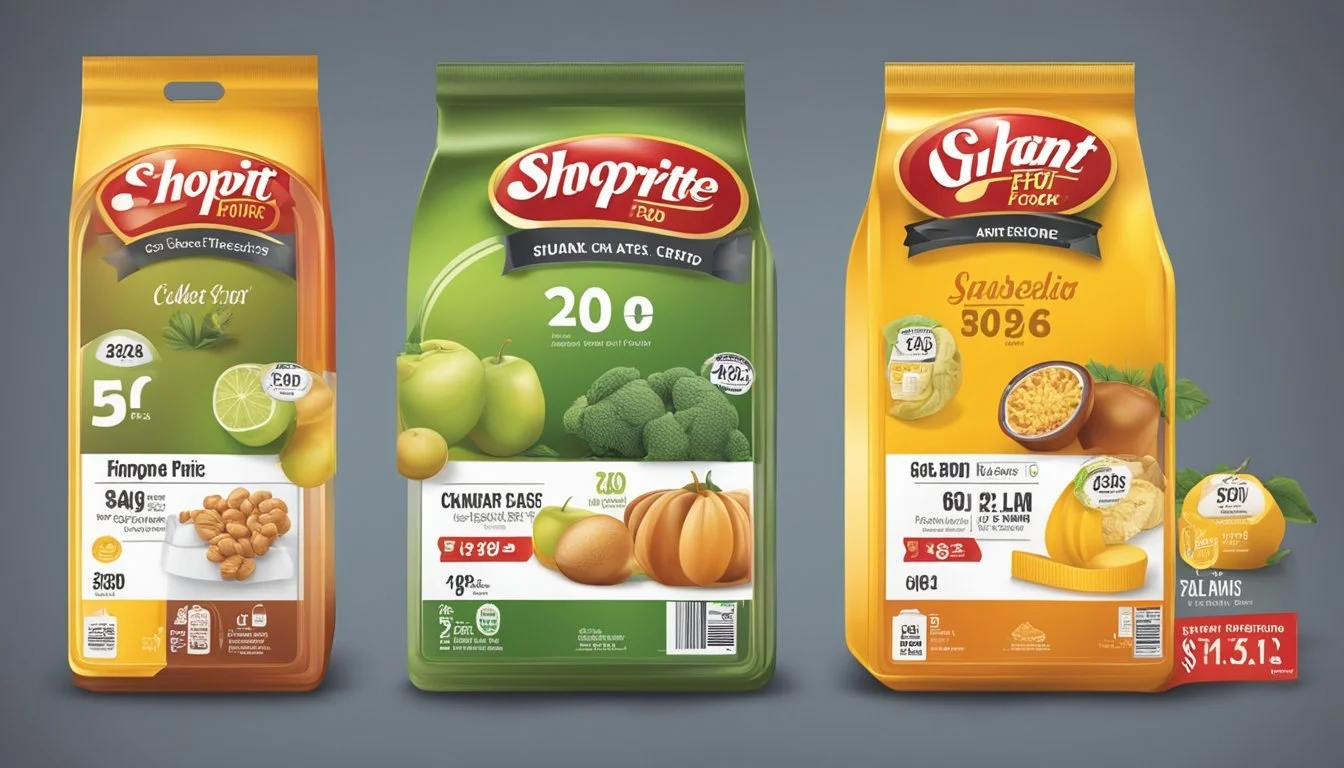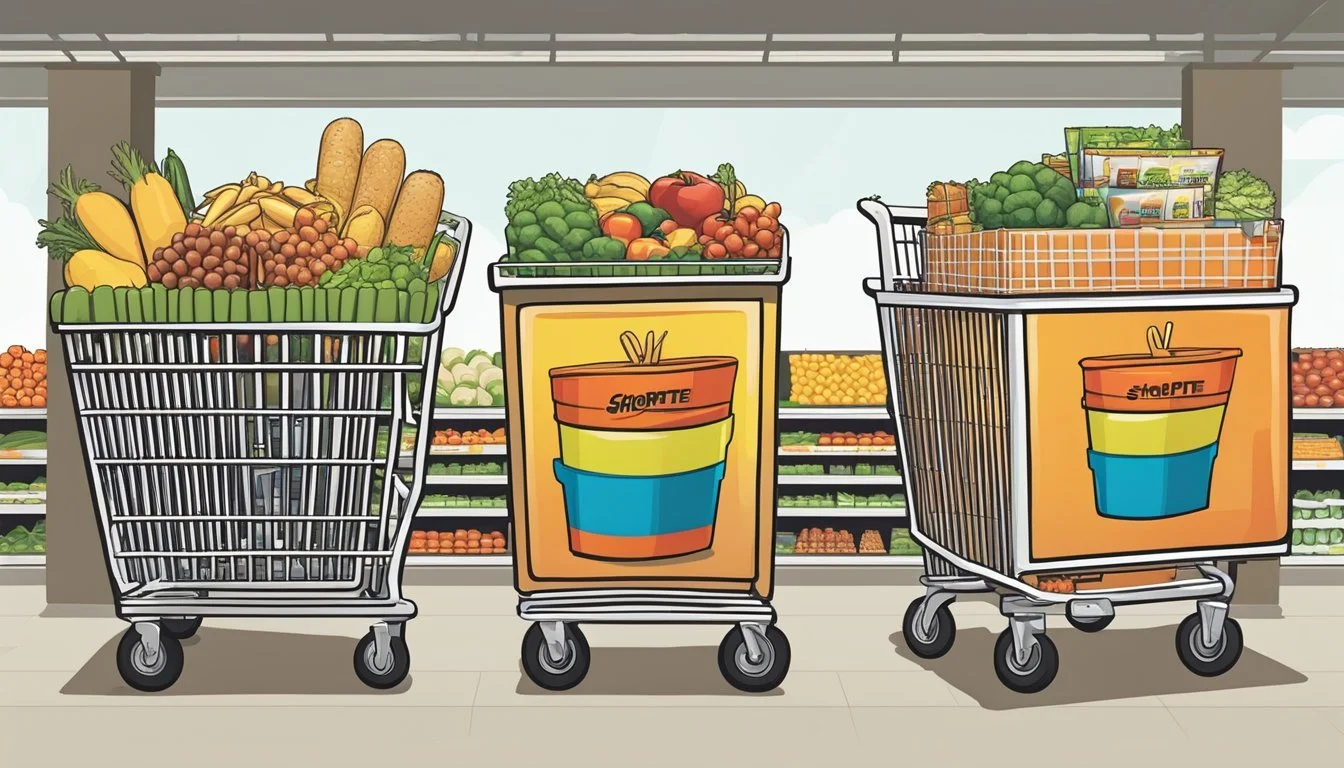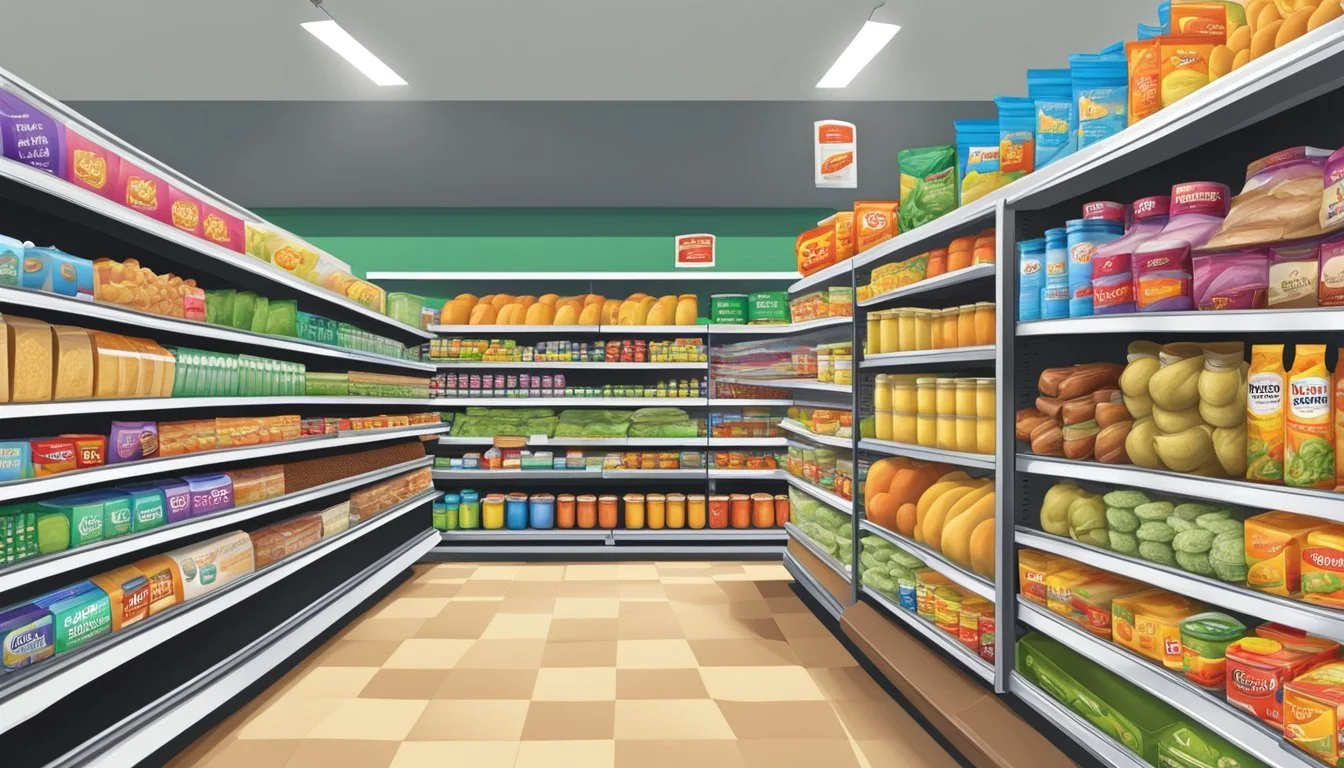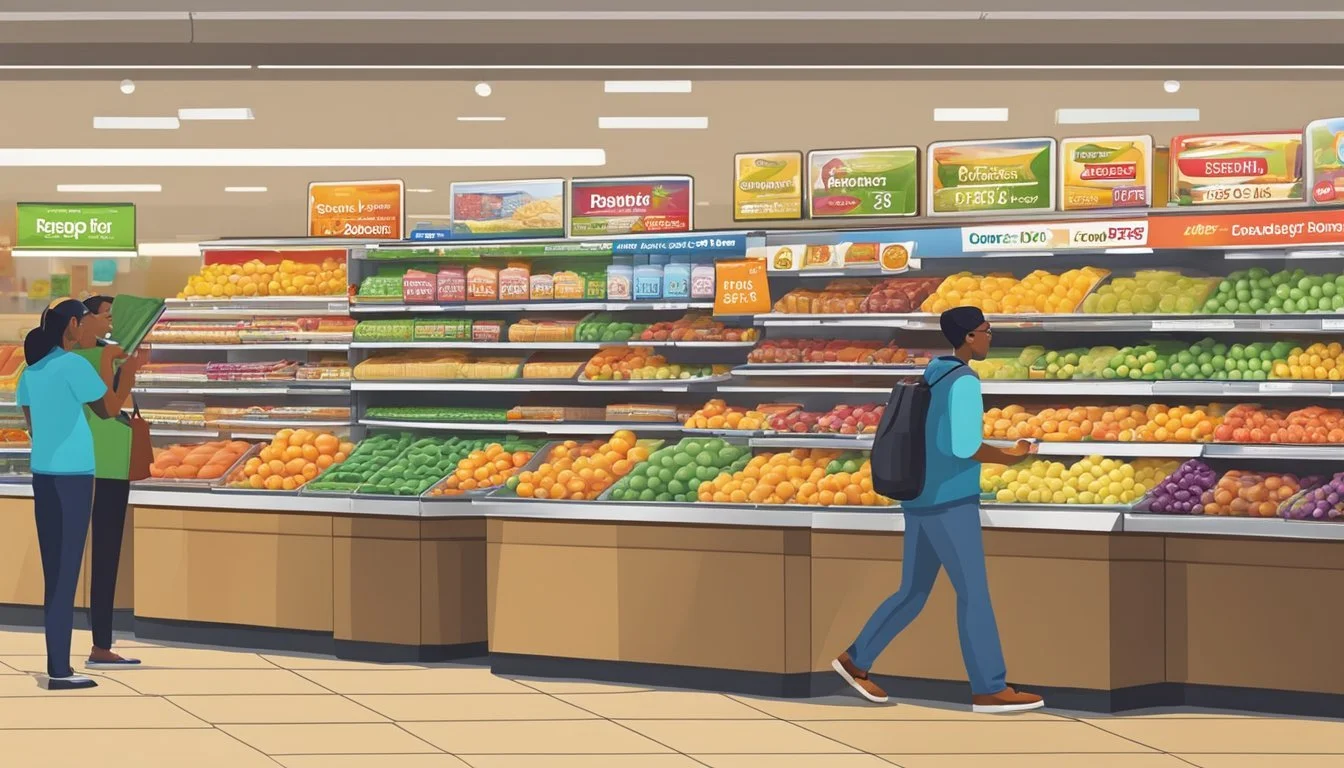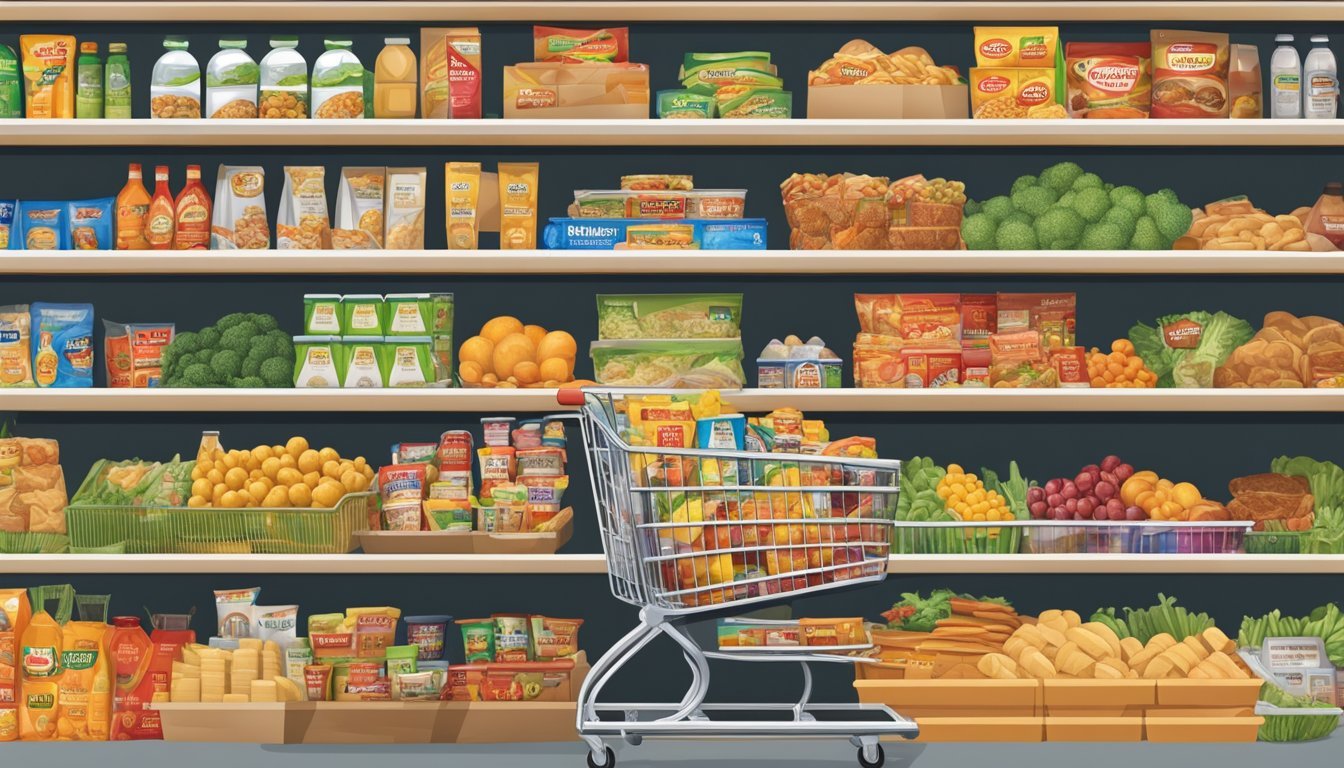Is Giant Food Cheaper Than Shoprite?
A price comparison of two popular grocery chains
Grocery shopping can be a significant expense for many households, making it essential to find the best deals. When comparing prices between major supermarket chains like Giant Food and ShopRite, shoppers are often curious about which offers better value for their money.
Based on available data, ShopRite generally offers lower prices than Giant Food, with some estimates suggesting ShopRite's prices are about 18% less expensive overall. This price difference can translate to substantial savings for families over time, potentially amounting to hundreds of dollars annually.
While Giant Food may have higher overall prices, it's important to note that individual item prices can vary. Some products might be cheaper at Giant Food, while others are more affordable at ShopRite. Savvy shoppers often compare weekly circulars and use loyalty programs to maximize their savings at both stores.
Understanding Grocery Pricing
Grocery pricing involves complex factors that affect the costs consumers pay at different stores. Shoppers can employ various strategies to compare prices and find the best deals.
Factors Influencing Grocery Prices
Location plays a significant role in grocery pricing. Stores in urban areas often have higher overhead costs, leading to increased prices. Competition in the market also impacts pricing strategies.
Seasonal availability of produce affects prices, with in-season fruits and vegetables typically costing less. Transportation costs influence pricing, especially for imported goods.
Store size and buying power matter. Larger chains like Walmart can negotiate better wholesale prices, allowing them to offer lower retail prices. Smaller local stores may have higher prices due to reduced purchasing volume.
Store brands are generally cheaper than national brands, offering savings to budget-conscious shoppers. Loss leaders - items priced below cost to attract customers - can provide significant savings on specific products.
Price Comparison Strategies
Shoppers can use several methods to compare prices effectively. Weekly sales flyers help identify deals across different stores. Many supermarkets offer price matching, allowing customers to get competitor prices without visiting multiple locations.
Digital tools and apps enable easy price comparisons. Some apps scan barcodes and show prices at nearby stores. Others compile weekly ads from various retailers for quick comparison.
Unit pricing helps compare similar products of different sizes. This method shows the cost per ounce or pound, making it easier to determine the best value.
Timing purchases around sales cycles can lead to substantial savings. Many grocery items follow predictable sales patterns, with discounts occurring every 6-8 weeks.
Analysis of Giant Food's Pricing
Giant Food employs various strategies to offer competitive prices while maintaining quality. The company balances regular pricing with promotions and store brands to attract budget-conscious shoppers.
Giant Food's Pricing Structure
Giant Food's pricing structure aims to be competitive in the grocery market. The chain offers a mix of national brands and store-brand alternatives at different price points. Giant's store brands, such as Nature's Promise and Taste of Inspirations, provide cost-effective options for customers.
Regular prices at Giant Food are generally in line with other major supermarket chains. However, they may be slightly higher than discount retailers like Walmart or Food Lion.
Giant Food uses a tiered pricing system, with some items priced lower for loyalty card members. This encourages customer retention and rewards frequent shoppers with better deals.
Special Offers and Promotions at Giant Food
Giant Food regularly runs sales and promotions to attract customers. Weekly circular ads feature discounted items across various departments. These sales typically rotate, allowing shoppers to save on different products throughout the month.
Digital coupons play a significant role in Giant's pricing strategy. Customers can load these coupons onto their loyalty cards for instant savings at checkout. The chain often offers personalized deals based on shopping history.
Giant Food's gas rewards program provides additional value. Shoppers earn points on grocery purchases, which can be redeemed for discounts on fuel at participating gas stations. This program enhances the overall value proposition for customers who frequently buy gas.
Examining Shoprite's Price Points
ShopRite is known for its competitive pricing strategies and customer-focused programs. The supermarket chain employs various tactics to attract budget-conscious shoppers while maintaining quality offerings.
Shoprite's Cost-Effectiveness
ShopRite consistently ranks as one of the more affordable grocery options in many regions. Their pricing strategy often undercuts competitors by 10-15% on average for comparable items.
ShopRite's store brand products offer particularly good value, with prices typically 20-30% lower than national brands. This allows customers to stretch their grocery budgets further.
The chain's "Can Can Sale" is a popular annual event featuring significant discounts on canned goods and other staples. This promotion helps shoppers stock up on essentials at reduced prices.
ShopRite's weekly circular highlights rotating deals and specials, enabling customers to plan their shopping around the best offers.
Loyalty Programs and Discounts at Shoprite
ShopRite's Price Plus card is the cornerstone of their loyalty program. It provides access to exclusive deals and personalized offers based on shopping habits.
Cardholders earn points on purchases, which can be redeemed for discounts on gas or groceries. This dual-benefit system appeals to cost-conscious consumers.
Digital coupons linked to the Price Plus card offer additional savings. Customers can easily load these to their accounts for automatic discounts at checkout.
ShopRite's mobile app enhances the shopping experience by providing easy access to digital coupons, weekly circulars, and personalized offers.
The chain also offers senior citizen discounts at select locations, typically providing 5% off on certain days of the week.
Comparative Analysis
Giant Food and ShopRite employ distinct pricing strategies that impact overall costs for consumers. Their approaches to price matching and item-specific pricing reveal key differences in affordability and value.
Price Match Policies
Giant Food offers a price match guarantee on identical items found at lower prices in local competitor ads. This policy excludes certain items like pharmacy prescriptions and gift cards. Customers must present the competitor's current ad at checkout to receive the lower price.
ShopRite's price match policy varies by store owner, as each location is independently operated. Many ShopRite stores match competitors' advertised prices on identical items, but specific terms may differ. Some locations require customers to bring in the competitor's ad, while others will honor verbally reported lower prices.
Both chains aim to remain competitive through these policies, potentially reducing price disparities between them.
Case Studies: Item-by-Item Comparison
A recent market basket comparison revealed mixed results between Giant Food and ShopRite. For staple items like milk, bread, and eggs, prices were often within cents of each other. Giant Food showed lower prices on national brand cereals and canned goods.
ShopRite edged out Giant Food on produce prices, offering slightly cheaper fruits and vegetables. Meat prices varied, with Giant Food having better deals on chicken while ShopRite offered more competitive beef prices.
Store-brand items at both chains were consistently less expensive than national brands. ShopRite's store brand generally undercut Giant Food's by a small margin.
Frozen foods and snack items showed the most variability, with each store offering better deals on different products. This suggests that savvy shoppers might benefit from splitting their purchases between the two stores.
Assessment of Product Selection
Giant Food and ShopRite offer diverse product selections to cater to various customer preferences. Both chains strive to provide quality options across different categories.
Quality of Produce and Meat Selection
Giant Food emphasizes fresh produce with a wide array of fruits and vegetables. Their produce section often features locally sourced items when in season. The meat department at Giant Food provides a range of cuts and options, including USDA Choice beef and antibiotic-free chicken.
ShopRite's produce section is known for competitive prices on staple items. They offer a mix of conventional and organic produce. ShopRite's meat department includes a variety of options, from budget-friendly cuts to premium selections. Many ShopRite stores have in-house butchers for custom cuts.
Both chains maintain seafood counters with fresh and frozen options. Giant Food tends to have a slightly wider selection of seafood varieties.
Availability of Organic and Specialty Items
Giant Food has expanded its organic offerings in recent years. They carry a good selection of organic produce, dairy, and packaged goods. Their specialty items include international foods, gluten-free products, and gourmet cheeses.
ShopRite's organic selection varies by store location but generally includes popular organic brands and produce. They offer a range of specialty items, particularly in larger stores. ShopRite's private label organic line provides more budget-friendly organic options.
Both chains stock name-brand products alongside their respective store brands. Giant Food typically has a broader selection of specialty and gourmet items compared to ShopRite.
Impact of Store Brands and Generic Options
Store brands and generic options play a significant role in price differences between Giant Food and ShopRite. These alternatives offer potential savings while raising questions about quality compared to name brands.
Analysis of Generic vs. Name Brand Pricing
Giant Food and ShopRite both offer store brand and generic alternatives to name brand products. These options are typically 20-30% cheaper than their branded counterparts. For example, a store brand cereal may cost $2.50 compared to $3.50 for the name brand equivalent.
Generic canned goods, pasta, and cleaning supplies often provide the largest savings. Dairy products like milk and cheese also tend to be significantly less expensive in store brand versions. However, the price gap narrows for certain categories like soft drinks and snack foods.
Both chains frequently run promotions on their store brands, further increasing potential savings. ShopRite's Bowl & Basket and Paperbird lines compete directly with Giant's Nature's Promise and Taste of Inspirations brands in terms of pricing.
Quality Assessment of Store Brands
The quality of store brands has improved significantly in recent years. Many shoppers find store brand products comparable to name brands in taste and effectiveness. Giant's Nature's Promise organic line, for instance, offers quality similar to national organic brands at lower prices.
Blind taste tests often show consumers unable to distinguish between store and name brands for staples like milk, bread, and canned vegetables. However, some shoppers perceive differences in more complex products like frozen meals or personal care items.
Store brands must meet the same FDA safety standards as name brands. Both Giant and ShopRite back their store brands with satisfaction guarantees, allowing customers to return items if unsatisfied. This policy helps build trust in store brand quality.
Some categories, like paper products and cleaning supplies, see little quality difference between store and name brands. In contrast, products like coffee or ice cream may have more noticeable variations in taste and texture.
Customer Experience and Services
Giant Food and ShopRite both offer various services to enhance the shopping experience. Each store has its own strengths in customer service, convenience, and shopping environment. Their delivery and pickup options also differ in availability and pricing.
Shopping Environment and Convenience
Giant Food stores typically provide a clean and organized shopping environment. Aisles are well-lit and products are neatly arranged. Many Giant Food locations feature wider aisles and more spacious layouts, making navigation easier for customers with carts.
ShopRite stores vary in layout and appearance, as they are independently owned and operated. Some locations offer a more traditional grocery store feel, while others have been modernized. ShopRite is known for its competitive pricing, which can lead to busier stores during peak hours.
Both chains prioritize customer service, with employees generally willing to assist shoppers. Giant Food has been noted for efficient checkout processes, aiming to minimize wait times.
Comparing Delivery and Pickup Options
Giant Food offers delivery services through its own platform and third-party partners. Customers can choose from same-day or scheduled delivery options. Giant also provides curbside pickup at many locations, allowing shoppers to order online and collect their groceries without entering the store.
ShopRite's delivery and pickup services vary by location due to its independent ownership model. Many ShopRite stores offer both delivery and pickup options through their website or mobile app. Some locations partner with third-party services for delivery.
Delivery fees and minimum order requirements differ between the two chains and can vary based on location and order size. Both stores often run promotions on delivery fees to attract customers to their online services.
Regional Market Analysis
Giant Food and ShopRite compete fiercely in the Northeast grocery market. Their pricing strategies and market positions vary across states, influencing consumer choices and regional shopping patterns.
Market Position in the Northeast
Giant Food maintains a strong presence in Maryland, Virginia, and Washington D.C. In these areas, it often offers competitive prices on staple items and fresh produce. ShopRite, on the other hand, dominates in New Jersey and parts of New York. It frequently runs promotions and deals that appeal to budget-conscious shoppers.
In Pennsylvania, both chains face off directly. Price comparisons here often show ShopRite with a slight edge, especially on store-brand products. However, Giant Food counters with loyalty programs and fuel perks.
Delaware sees a mix of both retailers, with prices fluctuating based on local competition. Connecticut shoppers tend to find ShopRite more prevalent, often with lower prices on bulk items and family-sized packages.
Expanding Beyond the Core Region
Giant Food has been cautious in expansion, focusing on strengthening its position in existing markets. It has invested in upgrading stores and improving online ordering systems in Maryland and Virginia.
ShopRite has shown more aggressive expansion. It has moved into parts of Pennsylvania traditionally dominated by other chains. The company has also explored opportunities in Ohio, testing the Midwest market.
Both retailers face challenges entering new territories. They must adapt pricing strategies to local economic conditions and consumer preferences. ShopRite's cooperative structure allows for more flexible pricing across different locations.
Giant Food relies on its parent company's resources for expansion efforts. It has targeted select areas in New York for potential growth, aiming to capture market share from established competitors.
Conclusion
Giant Food and ShopRite both offer competitive pricing on groceries. While ShopRite tends to have slightly lower prices overall, the difference is not substantial. Factors like store location, weekly sales, and loyalty programs can impact costs at both chains.
Walmart and Food Lion generally provide the lowest grocery prices among major retailers. Their prices often run 12-16% below average. Target also offers competitive pricing, typically coming in lower than both Giant and ShopRite.
Higher-end stores like Whole Foods and Wegmans have premium pricing. Budget-conscious shoppers may find better deals at discount chains like Dollar General or Family Dollar. Warehouse clubs such as Costco can provide savings on bulk purchases.
Store brand products are usually cheaper at both Giant and ShopRite compared to name brands. Taking advantage of digital coupons, loyalty rewards, and weekly specials can lead to significant savings at either store.
Ultimately, the cheapest option may vary based on specific items, current promotions, and individual shopping habits. Comparing prices across multiple stores and being flexible with brands can help maximize grocery savings.



